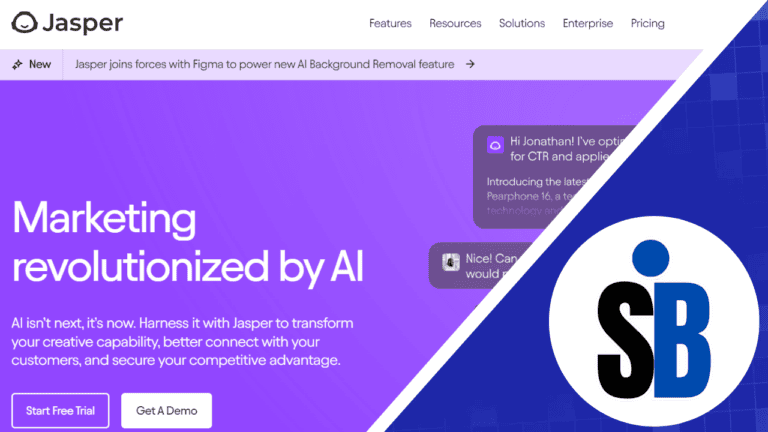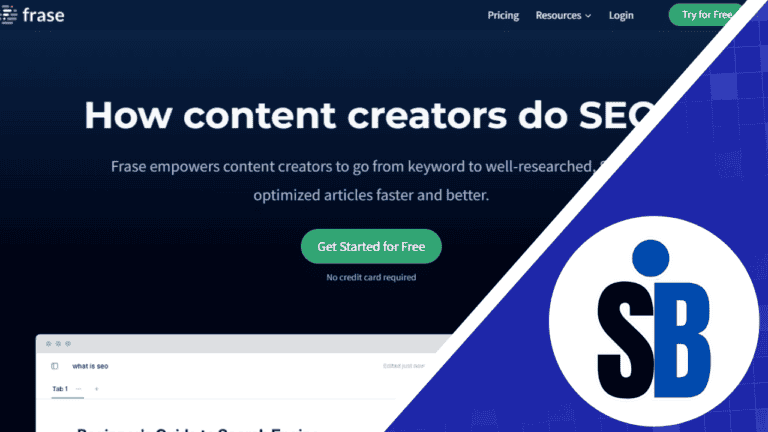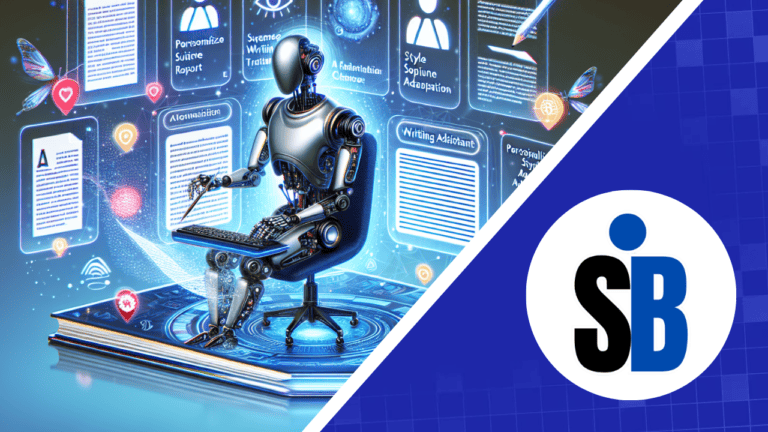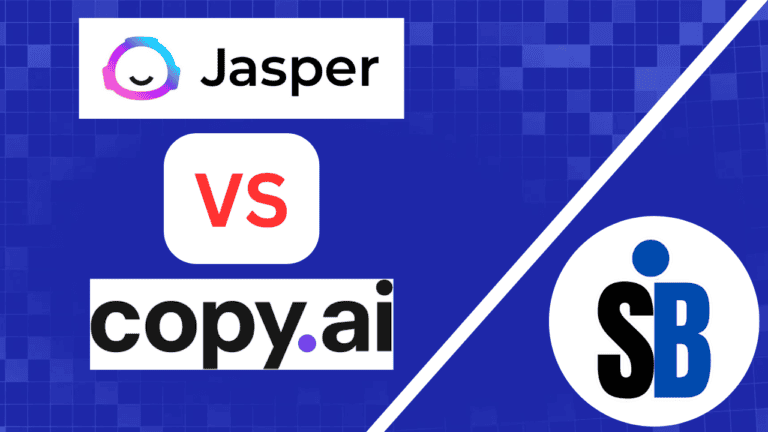If you’ve been anywhere near the internet the past few months, you must have heard about artificial intelligence, more commonly referred to as “AI.”
It seems like everybody has a set of beliefs when it comes to AI, some positive, others negative, and some just downright false!
For that reason, I have curated the ultimate list of over 150 AI statistics, trends, and other interesting fun facts so you can be well informed regarding the future of AI, its impact on jobs, consumer perceptions regarding AI, and everything else!
Market Overview and Projections
Starting off with the largest changes – the global market and its projected growth.
Following the “AI boom,” businesses and individuals alike are all trying to hop on board for a slice of the pie, (the money pie that is).
How will artificial intelligence change the market?
The projected market size in the Artificial Intelligence market is US$184.00 billion in 2024, and is anticipated to result in a market volume of US$826.70 billion by 2030.
The North America AI market accounted for 30.9% of revenue in 2023.
The U.S. AI market was valued at USD 42.00 billion in 2023.
The global artificial intelligence (AI) market size was estimated at USD 196.63 billion in 2023, and is projected to grow at a yearly rate of 36.6% from 2024 to 2030.
The total addressable market for generative AI software is estimated to be $150 billion, compared with $685 billion for the global software industry.
Up to a 26% boost in GDP for local economies from AI is projected by 2030.
The software solutions segment led the AI market, accounting for 35.8% of global revenue in 2023.
The deep learning segment led the AI market with the largest revenue share in 2023.
In 2018, AI’s impact on the global economy was projected to increase annually by 1.2% by 2030, equating to around US $13 trillion of additional economic output.
The market for artificial intelligence chips reached a value of US$5,658.1 million in 2018 and is anticipated to grow to US$83,257 million by 2027 at a yearly rate of 35%.
The global Artificial Intelligence (AI) market is expected to reach $228.3 billion by 2026.
The AI market was estimated at US$43.1 billion in 2020 and is projected to grow at a yearly rate of 32.7% from 2020 to 2026.
The Chinese AI market is forecast to reach $40.4 billion by 2026.
The global Artificial Intelligence market is projected to reach $228.3 billion by 2026.
Breakthroughs in generative artificial intelligence could lead to a 7% increase in global GDP, equivalent to almost $7 trillion, and lift productivity growth by 1.5% over a 10-year period.
The sales and marketing segment is projected to grow at the fastest yearly rate from 2024 to 2030.
Europe is expected to witness a substantial AI market growth at a yearly rate of 33.2% from 2024 to 2030.
The Asia Pacific AI market accounted for 25.6% of global revenue in 2023, with China projected to grow at a yearly rate of 43.5% from 2024 to 2030.
The Middle East and Africa AI market is anticipated to reach USD 166.33 billion by 2030.
Generative AI, like ChatGPT, is expected to contribute further to growth by between US $2.6 to $4.4 trillion.
The head-mounted displays segment in the wearable AI market is expected to grow at a yearly rate of over 20% from 2019 to 2025, driven by increased usage in the gaming sector.
The wearable AI market size is predicted to reach USD 180 billion by 2025.
The potential contribution to the global economy by 2030 from AI is estimated at $15.7 trillion, exceeding the current output of China and India combined.
The operations segment accounted for the largest market revenue share in 2023.
The advertising and media segment led the AI market in 2023, while the healthcare sector is expected to gain a leading share by 2030.
45% of total economic gains by 2030 will come from product enhancements, stimulating consumer demand through greater product variety and personalization.
The greatest economic gains from AI are expected in China (26% boost to GDP in 2030) and North America (14.5% boost), totaling $10.7 trillion and accounting for almost 70% of the global economic impact.
Sources: Grand View Research, Goldman Sachs, Statista, World Bank, Global Market Insights, PwC, PR Newswire, The Insight Partners, Forbes
AI Impact on Jobs and Workforce
Now to the part everyone is worried about – or at least 52% of employed individuals that is.
How will artificial intelligence impact our jobs? What about MY job?
Here are some interesting statistics that will give you an insight into just how the job market and workforce is changing in light of this AI revolution.
47% of business leaders and decision-makers are considering using AI tools over hiring new employees.
Cognitive technologies will replace 7% of US jobs by 2025.
57% of companies are piloting or deploying AI.
59% of companies have an AI strategy.
52% of employed respondents are worried AI will replace their jobs.
Almost half of business leaders are considering AI tools.
Shifts in workflows due to advances in AI could expose around 300 million full-time jobs to automation.
Roughly two-thirds of U.S. occupations are exposed to some degree of automation by AI, and a quarter to half of their workload could be replaced.
Jobs displaced by automation have historically been offset by the creation of new jobs, with technology-driven creation of new positions explaining more than 85% of employment growth over the last 80 years.
Generative AI is expected to have far-reaching implications for industries such as global enterprise software, healthcare, and financial services.
Generative AI can streamline business workflows, automate routine tasks, accelerate drug development, and improve software code development.
70% of companies understand how AI can generate business value.
There have been statistically significant increases in AI adoption, strategy development, and understanding from four years ago.
Only 1 in 10 companies generates significant financial benefits from AI.
“Cubicle work,” representing 89 million US jobs, is being augmented with cognitive solutions.
51.9% of business leaders believe that AI tools like ChatGPT will never replace an entire employee’s role.
Some business leaders believe AI tools will support existing roles, while others believe they will replace entire roles.
On average, leaders and decision-makers say that 26.8% of their workload could be completed by AI tools like ChatGPT.
The number of enterprises implementing AI grew 270% in the past four years and tripled in the past year.
A net loss of 7% of US jobs is estimated by 2025, with 16% being replaced and 9% being created.
Reasons for the surge in AI adoption include significantly matured AI capabilities, leading to enterprises being more willing to implement the technology.
AI is now considered an integral part of digital strategy, used in various applications such as chatbots in telco organizations (52%) and computer-assisted diagnostics in healthcare providers (38%).
Majority of companies are developing AI capabilities but have yet to gain significant financial benefits.
Office and administrative support staff will be the most rapidly disrupted.
The cognitive era will create new jobs such as robot monitoring professionals, data scientists, automation specialists, and content curators.
Forrester forecasts 8.9 million new jobs in the US by 2025.
93% of automation technologists feel unprepared or only partially prepared to tackle challenges associated with smart machine technologies.
Nearly 40% of organizations in the pharmaceutical sector have deployed automation, focusing on data gathering and improving patient care.
The biggest challenge facing organizations in AI deployment is skill shortage, with 54% of the 3,000 CIO respondents viewing it as the primary obstacle.
Around 300 AI use cases have been identified and rated, captured in the AI Impact Index.
Labor productivity improvements will initially drive GDP gains as firms aim to augment productivity with AI technologies and automate tasks.
94% of business leaders anticipate that employees will acquire new skills while on the job, compared to only 65% in 2018.
AI is transforming hiring operations by scanning resumes, uncovering biases, and accurately assessing candidates.
83% of executives consider AI a strategic priority, with 75% believing it will enable them to venture into new businesses.
Automation, including AI and Industry 4.0 technologies, can optimize operations and reduce production costs by 20%.
In 2024, artificial intelligence (AI) will fundamentally change how business gets done, impacting revenue growth, daily operations, customer and employee engagement, and business models.
73% of US companies have adopted AI to some extent, with generative AI (GenAI) leading the way.
On average, business leaders believe that more than a quarter of their current workload could be completed by AI tools like ChatGPT.
By 2024, AI will redefine how leaders and employees perform their jobs, with those adept at using AI gaining a competitive edge.
Leading organizations expect to double the number of AI projects within the next year.
The average number of AI/ML projects in organizations is currently four, with 59% having AI deployed.
Customer Experience (CX) and Task Automation are key motivators for AI use, with 40% prioritizing CX and 20% focusing on task automation.
Most organizations (56%) use AI internally to support decision-making and provide recommendations to employees.
The top challenges to adopting AI include a lack of skills (56%), understanding AI use cases (42%), and concerns with data scope or quality (34%).
The financial sector in the UK is leading in the use of artificial intelligence (AI), with 72% of banks, insurance firms, and other institutions utilizing the technology.
Organizations already using AI at scale are performing an average of 11.5% better than those who are not, up from 5% just one year ago.
Predictive analytics and systems for interpreting data to aid users in understanding their company are the most widely-used AI-driven technologies in the financial services sector at 52%.
Chatbots, like ChatGPT, are considered the most relevant use of generative AI to businesses by 83% of executives worldwide.
Marketers worldwide consider content creation and copywriting to be the most useful applications of generative AI.
Despite potential benefits, 60% of employees in the financial industry have not received training on how to use AI in their jobs, and 93% have never been consulted by their bosses about AI implementation.
Approximately 40% of marketers reported AI’s contribution helped improve their company’s revenue in email marketing.
88% of marketers believe their marketing organization must increase use of automation and AI to meet customer expectations and stay competitive.
49% see limited scalability as the most significant risk associated with inadequate marketing automation and AI adoption.
67% believe that strategically increasing the adoption of marketing automation is essential for acquiring and retaining customers.
50% of marketers believe inadequate AI adoption is holding them back from achieving their goals.
Sources: Tech.co, MIT Sloan Management, Forrester, Mitre, Goldman Sachs, Gartner (1), Gartner (2), Analytics Insight, PwC (1), PwC (2), Forbes, We Forum, Microsoft, eMarketer, Statista, Intuit Mailchimp
Technological Developments in AI
Technological advancements are continuously taking place when it comes to AI.
With AI being at the forefront of many high-level organizations, AI development is quite possibly at the forefront of all technological advancements.
Google LLC launched ‘Gemini’ in December 2023, a large language AI model available in three sizes: Gemini Nano, Gemini Pro, and Gemini Ultra.
Tech giants like Amazon, Google, Apple, Facebook, IBM, and Microsoft are heavily investing in AI R&D.
Access to historical datasets and advancements in data storage and recovery are driving AI innovation.
Artificial neural networks (ANN) is used by companies like Google Maps to improve route planning and feedback processing.
AI adoption is increasing in industries such as aerospace, healthcare, manufacturing, and automotive due to progress in deep learning and artificial neural networks (ANN).
Generative AI adoption has grown rapidly in the US, outpacing smartphones and tablets in speed of adoption.
The COVID-19 outbreak stimulated market growth in next-generation tech domains, including AI, due to the mandated work-from-home policy.
AI for Metadata Augmentation aims to automate the generation and enhancement of metadata to improve data accessibility and reusability.
AI for Data Discovery involves implementing sophisticated systems to ensure comprehensive and relevant search results.
By 2025, it is predicted that 95% of customer interactions will be powered by AI.
The implementation of AI in customer service aims to reduce waiting times, lower phone bills, and provide quicker and more efficient solutions to customer queries.
Advancements in AI, such as Baidu’s Deep Voice, blur the line between human and AI interaction, making it difficult for consumers to distinguish.
Consumers are becoming more familiar with new technologies like virtual reality and AI, making the transition to AI-powered customer service more acceptable.
Sources: Grand View Research, eMarketer, World Bank, AI Business
Consumer Perceptions and Usage of AI
How do individuals perceive AI? How often do they use it?
You just read a lot of facts about the global market, workforce, organizations and advancements – but what about in our everyday lives?
Only 39% of U.S. adults believe today’s AI technologies are safe and secure.
Most individuals are more concerned than excited about AI technology.
85% support a nationwide effort to make AI safe and secure, with strong support across political affiliations.
85% want industry to transparently share AI assurance practices before bringing products equipped with AI technology to market.
Most Gen Z and millennials are willing to use AI for everyday tasks, but a lower percentage of Gen X and boomers are willing to do so.
64% believe the primary purpose of AI is to assist, enhance, and empower consumers.
80% worry about AI being used for cyber attacks, 78% worry about identity theft, and 74% worry about deceptive political ads.
Only 46% believe AI technologies are ready for use in mission-critical applications for defense and national security.
38% of users use generative AI for fun, and 34% for learning about topics that interest them.
About half (49%) of people have used generative AI, with over a third of those users using it daily.
Generative AI usage has quickly taken off, with 65% of users being Millennials or Gen Z, and 72% employed.
70% of Gen Z report using generative AI, and 52% trust it to help them make informed decisions.
52% of super-users say their usage of generative AI is increasing compared to when they first started.
Non-users of generative AI are mostly Gen X or Baby Boomers, with 88% unclear how it will impact their lives.
40% of non-users say they aren’t familiar enough with the technology, and 32% say AI is not useful for them.
75% of users are looking to automate tasks at work and use generative AI for work communications.
45% of non-users would use generative AI more if it was integrated into technology they already use.
Virtual assistants, like Alexa and Siri, are the most popular use of AI for personal reasons, with 61.4% of people using them outside of work.
Approximately half (50.6%) of people use wearable fitness devices and trackers outside of work, compared to 35.7% inside work.
Around 48.5% of people use algorithmic recommendations through playlists outside of work, compared to 38.8% inside work.
45% of people intend to use AI to respond to people via text or email, and 43% intend to use it to answer financial questions.
Only 38% of consumers plan to use AI for planning travel itineraries, while 19% plan to use it for summarizing complex or lengthy copy.
On a daily basis, email spam filters are the most common use of AI (29.5%), followed by virtual assistants (19.3%) and algorithmic recommendations through playlists (18.2%).
There’s little difference between male and female AI usage, with both genders using email spam filters and virtual assistants similarly.
Virtual assistants are most commonly used on a weekly basis by those over age bracket.
The percentage of people using smart thermostats and energy meters increases with age, while the use of large language models decreases with age.
Around 81.9% of those between 18-25 have never used large language models, compared to 77.7% for those aged 61 and over.
27% of Americans say they interact with AI at least several times a day, while another 28% think they interact with it about once a day or several times a week.
The biggest cohort of generative AI users in the US are 25 to 34-year-olds, accounting for over one-fifth of all monthly users.
Sources: Mitre, AIPRM, Agility PR, Pew Research Center, eMarketer
Ethical and Societal Implications
Of course, with the advancement of AI technologies, along with the rapid integration of such technologies, questions regarding ethics certainly enters the frame.
AI is constantly learning, and building off of previous work, what kind of societal implications does such a technology introduce?
The AI industry faces increasing regulatory scrutiny due to concerns about algorithmic bias, privacy violations, and job displacement.
The launch of generative AI has increased mainstream AI awareness, fostering public discourse on its benefits and risks.
62% of users would use generative AI more if it was more safe/secure.
70% of non-users would use generative AI more if they knew more about the technology, and 64% if it was more safe/secure.
Just 15% of Americans are more excited than concerned about the increasing use of AI in daily life, compared with 38% who are more concerned than excited.
A greater share of Americans are more concerned than excited about the increased use of AI in daily life.
Privacy concerns, including impersonation, manipulation, and misinformation, are among the top worries US adults have about AI.
Sources: Grand View Research, World Bank, Agility PR, Pew Research Center, eMarketer
Interesting and Fun Facts About AI
OpenAI’s ChatGPT gained 1 million users five days after launching. The only application to beat this is Meta’s “Threads,” which gained over 2 million users in only 2 hours.
Government support globally for wearable technology to promote healthy living is evident, such as the collaboration between the Singapore government and Fitbit to provide free fitness trackers to citizens as part of a national health program.
68% of Americans correctly identified AI at work in wearable fitness trackers.
64% correctly identified custom product recommendations based on previous purchases as using AI.
65% were aware that AI is at work in customer service chatbots.
62% knew that security cameras that recognize faces use AI.
57% recognized customized music playlist recommendations as utilizing AI.
51% correctly identified email services categorizing messages as spam as using AI.
Americans with higher levels of education and income are more aware of AI examples in daily life.
Younger Americans are more aware of AI applications than older Americans.
Men scored higher on the AI awareness scale than women.
Frequent internet users are more aware of AI than less frequent users.
The majority of Americans think they interact with AI at least several times a week.
Elon Musk predicts that by 2025, AI will surpass humans in general intelligence.
AI’s growth is not specific to a particular industry but can be applied across various sectors.
Companies with compelling AI pitches are securing funding despite less investment in most sectors.
AI represents an increasingly common part of many startups’ technology stacks.
There’s a possibility that being an AI company may cease to be a relevant categorization as AI becomes essential for most startups.
More than 1 in 4 dollars invested in American startups in 2023 went to AI-related companies.
Sources: Statista, Global Market Insights, Pew Research Center, Business Standard, Crunchbase
Conclusion
And there you have it, over 150 facts, trends, and interesting fun facts related to AI.
Just by going through some of these facts, it becomes clear just how huge AI is not only now, but also for our future.
AI has become so deeply integrated into our lives, and only continues to grow and grow at an almost alarming rate.
Its clear that AI is here to stay, whether that means for good or for bad. So best to be prepared for it!






